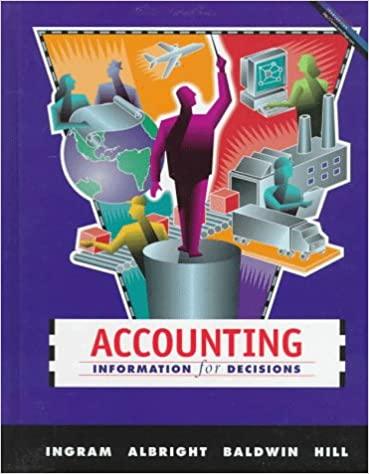CHAPTER II TEST Accounting and Other Financial Activities True or False Write T for true or F for false to the left of each statement. 1. Organizations do not need to keep accounting and financial data. 2. Most accounting activities today are completed with a computer and stored on disk for future updates and revisions 3. A well-designed accounting system produces reliable information that can be used to prepare financial statements for decision making. 4. Inaccurate accounting records often contribute to business failure. 5. Accounts payable and accounts receivable keep track of money owed to vendors. 6. All businesses should prepare financial statements on a regular basis so that they can note any changes or trends immediately. 7. The home keys for a ten-key pad or calculator are 7, 8, and 9. With electronic funds transfer, banking transactions are "paperless." 9. The length of an accounting cycle is never a fiscal year. 10. Computerized accounting systems have built-in controls to examine data validity before transactions are accepted. 8. 11. A computerized payroll program only calculates pay for commission employees. 12. Unlike a balance sheet, the income statement reflects an organization's profitability over a given time period. Name Multiple Choice Write the letter of the answer to the left of each question. 13 is a popular accounting software package. a. Word b. Excel c. Peachtree d. PowerPoint is to record current financial transactions 19. All income statements must satisfy the following accounting equation: 14. The purpose of a(n) through journal entries. a. balance sheet b. general ledger c. income statement d. petty cash fund 15. The purpose of a(n) is to show the financial condition of a business at a particular time. a. balance sheet b. general ledger c. income statement d. petty cash fund 16. The purpose of a(n) is to provide a summary of all income and expenses for a certain period of time. a. balance sheet b. general ledger c. income statement d. petty cash fund 17. Spreadsheets are a. computerized worksheets. b. helpful in performing "what if" analysis. c. used to generate reports such as budgets and depreciation tables. d. all of the above 18. All balance sheets must satisfy the following accounting equation: a. Assets = Liabilities + Owner's Equity b. Liabilities = Assets + Owner's Equity c. Net income = Revenue - Expenses d. Revenue = Net income - Expenses a. Assets = Liabilities + Owner's Equity b. Liabilities - Assets + Owner's Equity c. Net income = Revenue - Expenses d. Revenue = Net income Expenses 42 2003 THOMSON/Som








